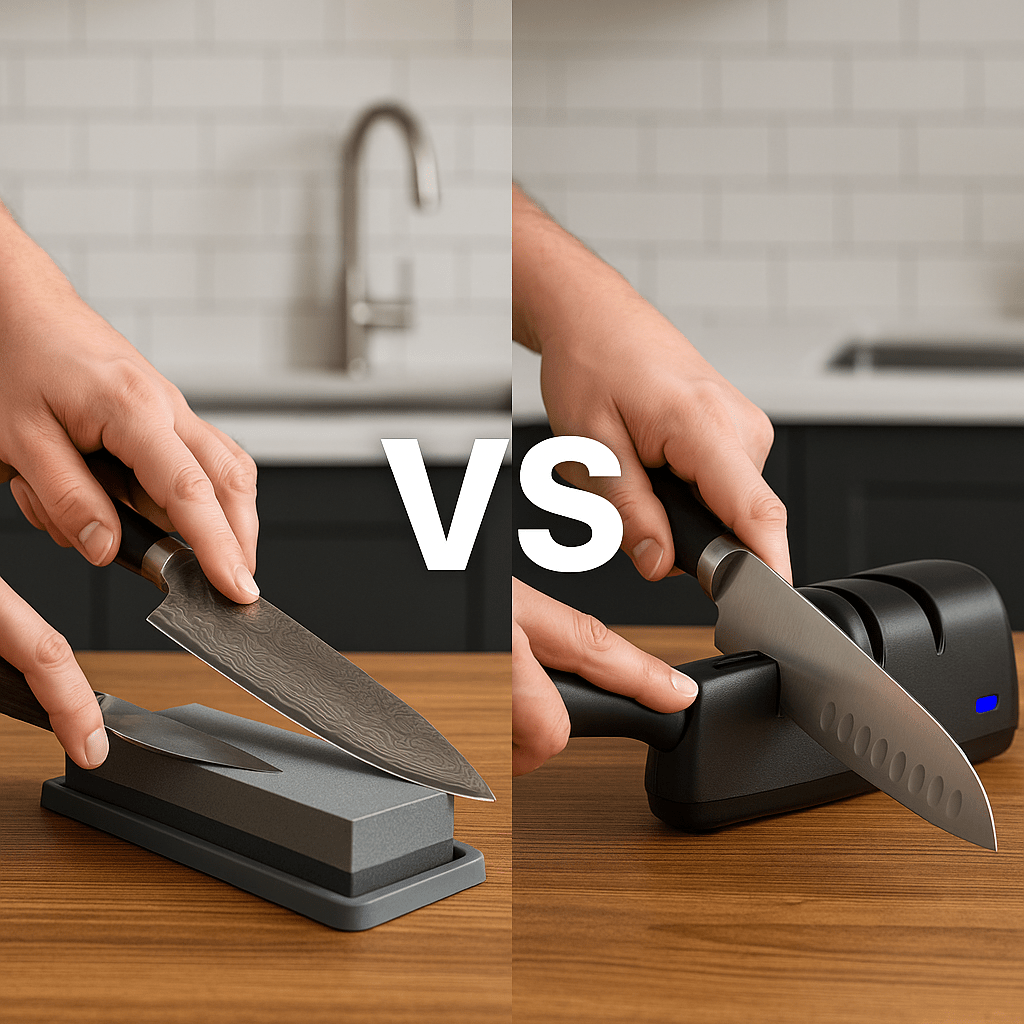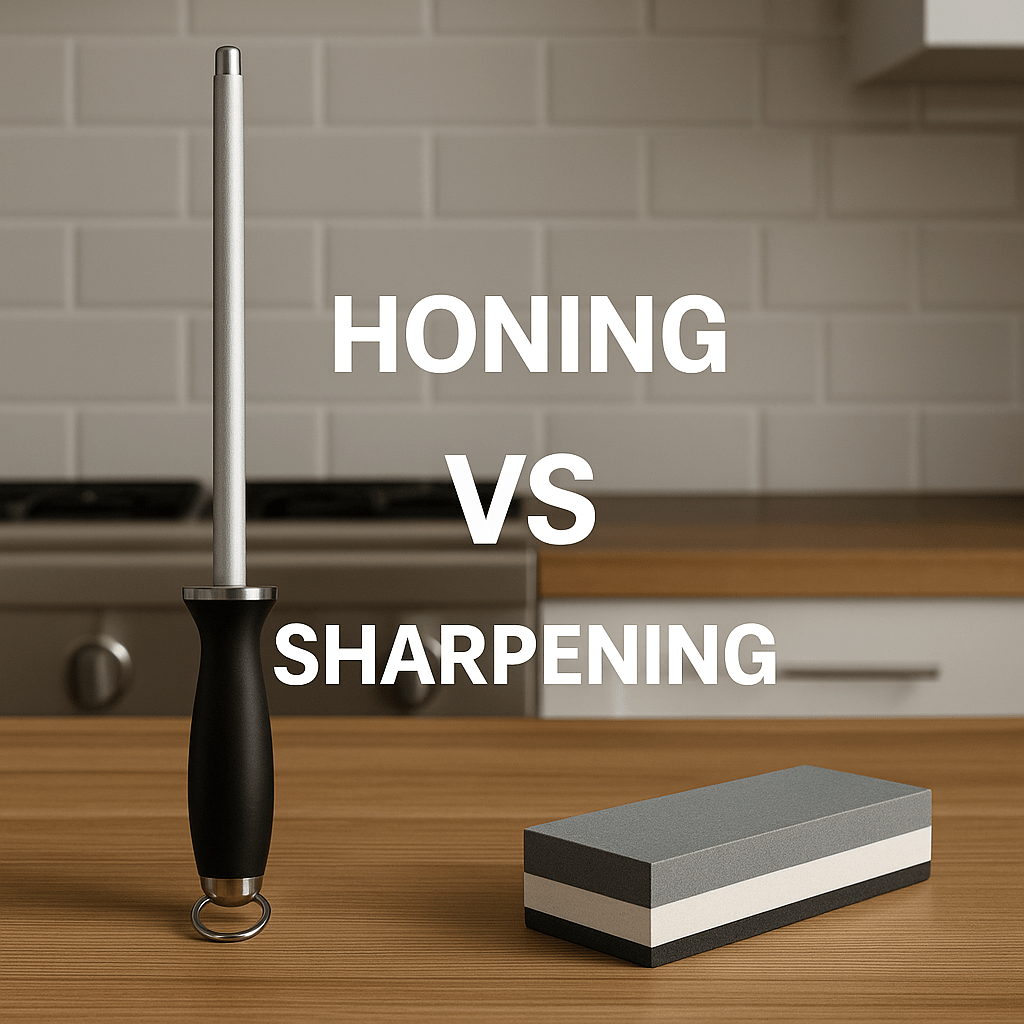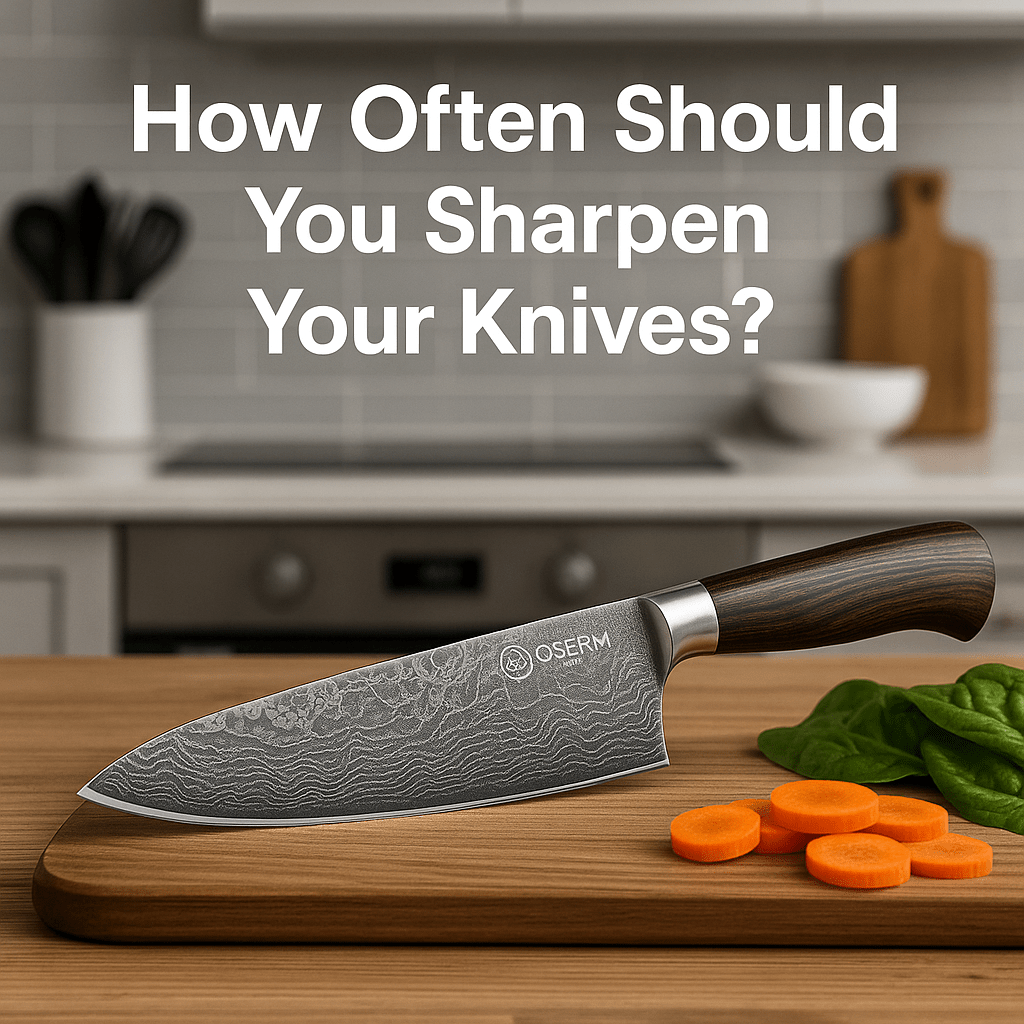
Manual vs Electric Knife Sharpeners – Which Is Better for Japanese Knives?
Every home chef knows that a dull knife is more dangerous than a sharp one. But when it’s time to restore that perfect edge, you’ll face a common question: should you use a manual sharpener or an electric one? Both can make your knives sharp again—but the method you choose will dramatically affect the blade’s lifespan, sharpness, and even the look of your knife.
What Is Manual Sharpening?
Manual sharpening uses your skill and control rather than a motorized system. It can involve a whetstone (waterstone), a guided-angle sharpener, or a manual pull-through tool. The process requires patience, but it delivers precision that no machine can match—especially for Japanese knives like OSERM Japanese Damascus knives.
- Purpose: Gently removes metal to rebuild a fine, razor-sharp edge.
- Frequency: Every 1–2 months for home use, depending on cooking volume.
- Best Tool: 1000/6000-grit waterstone for perfect control and polish.
What Is Electric Sharpening?
Electric sharpeners use spinning abrasive wheels powered by a motor to grind your knife’s edge quickly. They’re designed for convenience—plug in, pull through, and you’re done in seconds. However, that speed often comes with a tradeoff in precision and control.
- Purpose: Quickly restores an edge by aggressively removing material.
- Frequency: Once every few months (best for softer stainless steel knives).
- Best Tool: Multi-stage electric sharpeners with coarse and fine settings.
Key Difference Between Manual and Electric Sharpening
The key difference lies in control and aggressiveness. Manual sharpening allows you to maintain your knife’s original edge geometry and polish, while electric sharpeners often remove more metal than necessary, potentially shortening your knife’s lifespan.
| Feature | Manual Sharpening | Electric Sharpening |
|---|---|---|
| Precision | Excellent – full control over angle and pressure | Limited – fixed angle settings |
| Speed | Slower (5–10 minutes) | Very fast (1–2 minutes) |
| Material Removal | Minimal – protects blade steel | High – shortens knife lifespan |
| Best For | Japanese Damascus knives (VG-10, 15° edge) | Western stainless knives (20° edge) |
| Skill Required | Moderate – learn basic angles | None – plug and sharpen |
Why Manual Sharpening Is Better for OSERM Knives
All OSERM Damascus knives are crafted from VG-10 core steel with 67 layers of Damascus cladding. These knives are designed for precision, not brute force. Using an electric sharpener can overheat and damage the blade’s fine microstructure, dulling its performance and fading its unique Damascus pattern.
Manual sharpening on a whetstone, however, keeps the steel cool, the layers intact, and the edge mirror-polished. It also gives you more control over the 15° edge angle typical of Japanese blades—something electric sharpeners often fail to respect.
When to Choose Electric Sharpening
If you own several standard stainless-steel kitchen knives and simply want quick, consistent sharpness without worrying about fine edges, an electric sharpener can be practical. It’s perfect for everyday users who prioritize speed over craftsmanship.
However, it’s not recommended for Damascus knives or high-carbon blades—these deserve the precision and care of a whetstone.
OSERM’s Professional Tips
- For routine care, use a ceramic honing rod every few cooking sessions.
- Perform full sharpening on a whetstone every 1–2 months (or when honing no longer helps).
- Use light water on the stone to prevent overheating and achieve a smooth finish.
- Never use electric sharpeners on VG-10 or Damascus blades.
Common Mistakes to Avoid
- Using the wrong angle (20° instead of 15°) on Japanese knives.
- Pressing too hard on the whetstone—let the stone do the work.
- Skipping honing, which causes premature dullness.
- Relying only on electric sharpeners, which remove too much metal.
Conclusion
If you’re sharpening a premium knife, remember: precision beats speed. Manual sharpening may take longer, but it keeps your knives sharper, longer, and more beautiful. Electric sharpeners have their place—but for OSERM Japanese Damascus knives, the traditional way is still the best way.
Sharpening by hand isn’t just maintenance—it’s a connection between you and your craft.
Weekly Deal 🔥
Keep your knives razor-sharp with OSERM’s recommended Whetstone + Ceramic Honing Rod Set. Designed specifically for VG-10 Damascus blades to help you maintain that perfect edge at home.
Shop OSERM Knife Care Essentials →
You Might Also Like
- Honing Rod vs Sharpening Stone – What’s the Difference?
- Knife Care 101 – How to Make Your Knives Last Longer
- Damascus Steel vs VG-10 – Which Is Better?
Tags: manual vs electric sharpeners, OSERM Damascus knives, whetstone, honing rod, knife maintenance, VG-10 steel, Japanese knives






